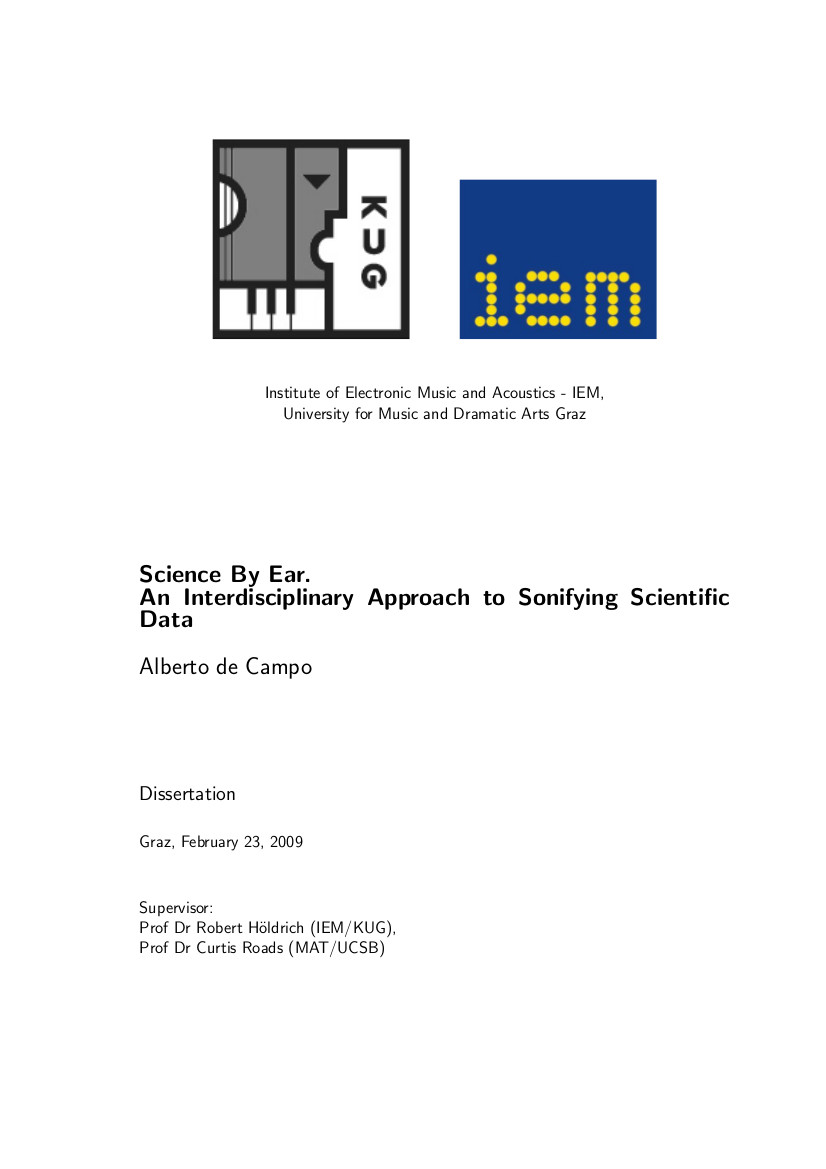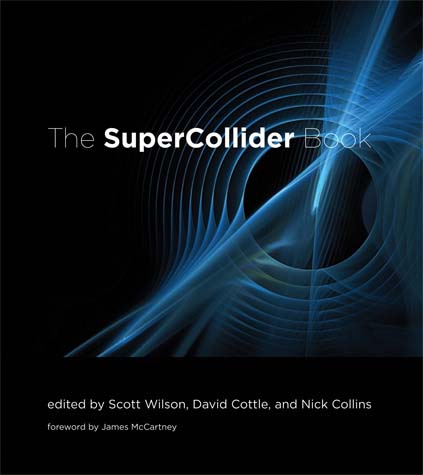Trevor Pinch, Karin Bijsterveld (eds.): The Oxford Handbook of Sound Studies (2011)
Filed under book | Tags: · acoustics, computing, data visualisation, electronic music, field recording, game studies, hip hop, listening, medicine, music, noise, perception, phonograph, radio, science, sonification, sound, sound design, sound recording, sound studies, vision

“Written by the leading scholars and researchers in the emerging field of sound studies, The Oxford Handbook of Sound Studies offers new and fully engaging perspectives on the significance of sound in its material and cultural forms. The book considers sounds and music as experienced in such diverse settings as shop floors, laboratories, clinics, design studios, homes, and clubs, across an impressively broad range of historical periods and national and cultural contexts.
Science has traditionally been understood as a visual matter, a study which has historically been undertaken with optical technologies such as slides, graphs, and telescopes. This book questions that notion powerfully by showing how listening has contributed to scientific practice. Sounds have always been a part of human experience, shaping and transforming the world in which we live in ways that often go unnoticed. Sounds and music, the authors argue, are embedded in the fabric of everyday life, art, commerce, and politics in ways which impact our perception of the world. Through an extraordinarily diverse set of case studies, authors illustrate how sounds — from the sounds of industrialization, to the sounds of automobiles, to sounds in underwater music and hip-hop, to the sounds of nanotechnology — give rise to new forms listening practices. In addition, the book discusses the rise of new public problems such as noise pollution, hearing loss, and the “end” of the amateur musician that stem from the spread and appropriation of new sound- and music-related technologies, analog and digital, in many domains of life.”
Publisher Oxford University Press, 2011
ISBN 0199995818, 9780195388947
624 pages
Reviews: John F. Barber (Leonardo, 2012), Bruce Johnson (Popular Music, 2013), William Cheng (Journal of the American Musicological Society, 2014).
Comment (0)Alberto de Campo: Science by Ear: An Interdisciplinary Approach to Sonifying Scientific Data (2009)
Filed under thesis | Tags: · perception, software, sonification, sound

Sonification of Scientific Data is intrinsically interdisciplinary: It requires collaboration between experts in the respective scientific domains, in psychoacoustics, in artistic design of synthetic sound, and in working with appropriate programming environments. The SonEnvir project hosted at IEM Graz put this view into practice: in four domain sciences, sonification designs for current research questions were realised.
This dissertation contributes to sonification research in three aspects:
The body of sonification designs realised within the SonEnvir context is described, which may be reused in sonification research in different ways.
The software framework built with and for these sonification designs is presented, which supports fluid experimentation with evolving sonification designs.
A theoretical model for sonification design work, the Sonification Design Space Map, was synthesised based the analysis of this body of sonification designs (and a few selected others). This model allows systematic reasoning about the process of creating sonification designs, and provides concepts for analysing and categorising existing sonifications designs more systematically.
Dissertation
Institute of Electronic Music and Acoustics – IEM, University for Music and Dramatic Arts Graz, February 2009
Supervisors: Robert Höldrich, Curtis Roads
211 pages
SonEnvir research project
PDF
View online (on Scribd.com, from the author)
Scott Wilson, David Cottle, Nick Collins (eds.): The SuperCollider Book (2011)
Filed under book | Tags: · code, computer music, microsound, music, programming, software, sonification, sound, sound art, sound synthesis

“SuperCollider is one of the most important domain-specific audio programming languages, with potential applications that include real-time interaction, installations, electroacoustic pieces, generative music, and audiovisuals. The SuperCollider Book is the essential reference to this powerful and flexible language, offering students and professionals a collection of tutorials, essays, and projects. With contributions from top academics, artists, and technologists that cover topics at levels from the introductory to the specialized, it will be a valuable sourcebook both for beginners and for advanced users.
SuperCollider, first developed by James McCartney, is an accessible blend of Smalltalk, C, and further ideas from a number of programming languages. Free, open-source, cross-platform, and with a diverse and supportive developer community, it is often the first programming language sound artists and computer musicians learn. The SuperCollider Book is the long-awaited guide to the design, syntax, and use of the SuperCollider language. The first chapters offer an introduction to the basics, including a friendly tutorial for absolute beginners, providing the reader with skills that can serve as a foundation for further learning. Later chapters cover more advanced topics and particular topics in computer music, including programming, sonification, spatialization, microsound, GUIs, machine listening, alternative tunings, and non-real-time synthesis; practical applications and philosophical insigh”s from the composer’s and artist’s perspectives; and “under the hood,” developer’s-eye views of SuperCollider’s inner workings. A Web site accompanying the book offers code, links to the application itself and its source code, and a variety of third-party extras, extensions, libraries, and examples.”
Foreword by James McCartney
Publisher MIT Press, 2011
ISBN 0262232693, 9780262232692
756 pages
Review: Dave Phillips (Linux Journal).
PDF (removed on 2014-2-4 upon request of the publisher)
Code (ZIP)
Book resources (code, video examples)
Book errata

